Eight adults and children wait at a bus stop, all fixated on their handheld devices, checking emails, texting, and playing games. They do not look side to side, even at family members. They rarely look up to check for an approaching bus—they are that plugged in and tuned out.
Could we magically transform this scene into a vibrant hub where families engaged with their children—where as in days of old the families gathered around a big puzzle and try to create the scenes on the top of the box? Can we get people to look into each other’s eyes, to tell stories, to play?
Meet Urban Thinkscape—a new way to think about the power of public spaces—our brainchild developed in concert with architect Itai Palti. Urban Thinkscape marries architectural design with evidence-based knowledge from the science of how people learn. It places aesthetically beautiful, fun, and exciting learning opportunities directly within cityscapes in the places where people naturally go—at bus stops, on sidewalks, and in modified streetlights.
What might this look like?
Our first design is what we call Animation Streetlight. Turn the wheel to create an animation projection on the ground below. This installation encourages caregivers and children to talk about what they see happening and helps to develop curiosity as they figure out how it works. Our second design is Jumping Feet—it is made up of a series of footprints embedded in the ground. Though this activity looks like a simple game of hopscotch, it is fashioned off of a well-used assessment of self-regulation skills and develops these skills by asking children to override the impulse to jump according to a simple pattern. Our final example is the Puzzle Bench. The back wall of this bus stop challenges caregivers and children to complete a series of three puzzles all available as the back of the otherwise ordinary bench. These puzzles work on children’s spatial skills, which are critical for later success in the subjects of science, technology, engineering, and math.
Figure 1: Examples of Urban Thinkscape
 Note: (left to right) Animation Streetlight, Jumping Feet, and Puzzle Bench
Note: (left to right) Animation Streetlight, Jumping Feet, and Puzzle Bench
For decades, our communities have been plagued by inequities between low-income and higher-income children. Low-income children enter formal schooling already lagging their peers—a burden that often follows them for life. They are often a couple of years behind in language skill, reading readiness, and even in the kind of spatial skills that predict later mathematical learning. To address these gaps, policymakers focus largely on schooling as the great equalizer. If only we can get children into high quality schools, they will be better prepared, and we can dilute, if not dissolve, the inequities.
Herein, however, lies the rub. Children spend only 20 percent of their waking time in school, leaving the other 80 percent as discretionary time. Urban Thinkscape provides one way in which we might support children during that critical other 80 percent. This “intervention” augments what is done in school through crafting carefully planned play experiences that focus on clear learning outcomes.
After a number of community meetings where we met with both city officials and neighbors, we worked to shape activities that would become a highlight of the neighborhood. Grandparents, parents, children, educators, and community leaders sat around the table with us to determine the location and the final designs. In the end, the highly respected community leader Bettye Ferguson of the Belmont Alliance Civic Association asked that we consider the small plot of land that she and her friends lovingly looked after for years, tending rose bushes and mowing the grass. Her neighbors wanted something in the neighborhood that would “invite families to come in and stay rather than to leave.”
The very first Urban Thinkscape, supported by the William Penn Foundation, is scheduled for installation at 40th and Lancaster Avenues in the heart of West Philadelphia’s Belmont neighborhood. It is here, in a low-income urban setting, that we are erecting these new structures in public spaces to promote curiosity and playful learning. The initial Urban Thinkscape will be situated on the historic spot where Martin Luther King, Jr. led the “Freedom Now” rally on August 2, 1965. It will sit on a triangular lot featuring a bus stop serving the Route 40 bus, where many wait at all times of day to ride across town. Perhaps most notably, on side of the Apostolic Church of the True Yokefellow and directly adjacent to the lot, there is a beautiful mural depicting the wealth of history in the Belmont neighborhood.
 Portion of the “Welcome to Belmont” mural at 40th and Lancaster Avenue. (Brenna Hassinger-Das took this picture.)
Portion of the “Welcome to Belmont” mural at 40th and Lancaster Avenue. (Brenna Hassinger-Das took this picture.)
Figure 2: Example of designs on the 40th and Lancaster Avenue site

Urban Thinkscape invites cities and neighborhoods to be the agents of change for children who play in their parks and wait for their school buses. It is a new idea that blends urban revitalization with informal education. Though we are just beginning to test its impact, a recent article by Bassok et al., gives us hope that Urban Thinkscape can move the needle for disadvantaged children. Bassok and colleagues’ article suggests that we are finally lessening inequities between low-income children and their middle-income peers. Since 1998, we have reduced the reading gap by 16 percent and the math gap by 10 percent between children from the highest and lowest income levels at kindergarten entry.
How might we explain this welcome reversal in a long-term decline?
The authors argue that part of the answer comes from access to high quality preschool. They go on to acknowledge, however, that schooling alone does not explain the data. A change in parent attitudes towards learning, more engagement between parents and children, and trips to museums and libraries have all changed in the last 15 years and are all part of the solution. In short, a culture of positive learning seems to be taking hold. Urban Thinkscape is designed to spark that culture, changing attitudes toward learning, and increasing children’s engagement with activities, like puzzle play, that support mathematical learning.
So, how do we get those eight adults and children to put down their phones and start interacting? When everyday environments offer fun, eye-catching, informal learning opportunities for both children and parents, we are betting that children and their parents will engage around playful learning. And the first instance of this innovative approach is Urban Thinkscape—part of the Learning Landscapes initiative at the Brookings Institution. Urban Thinkscape is one among a number of changes that cities can champion to remediate some of the inequities that low-income children face from the time they are born.
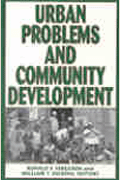
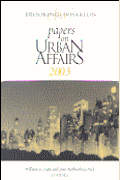
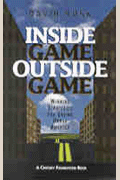
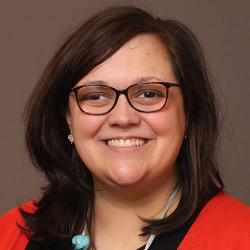
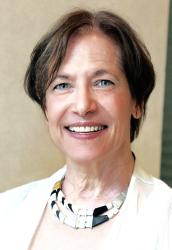
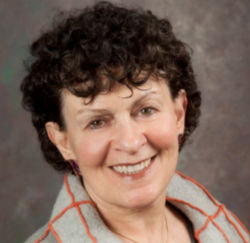



Commentary
Urban Thinkscape: Using the city as an agent of change
January 5, 2017